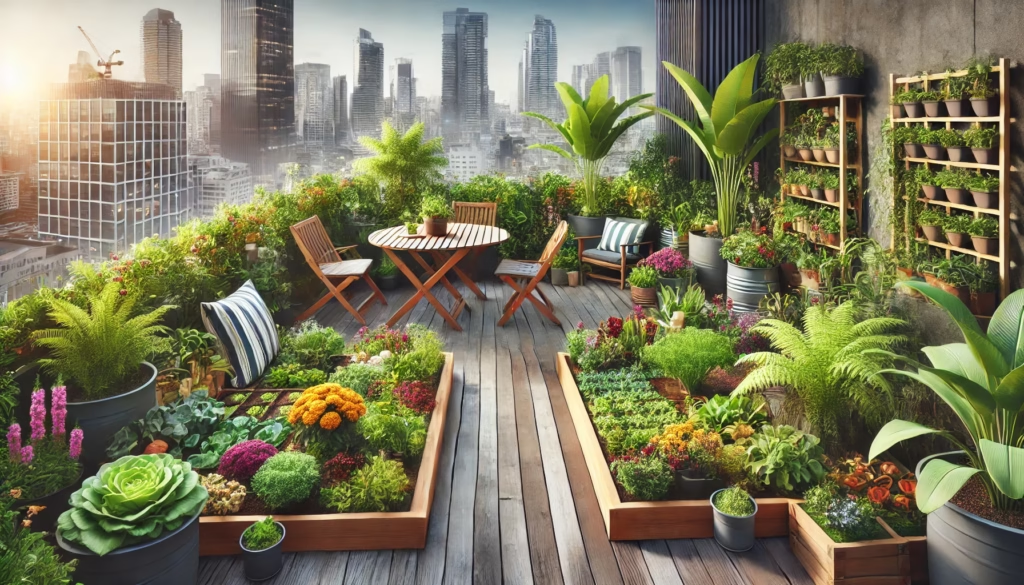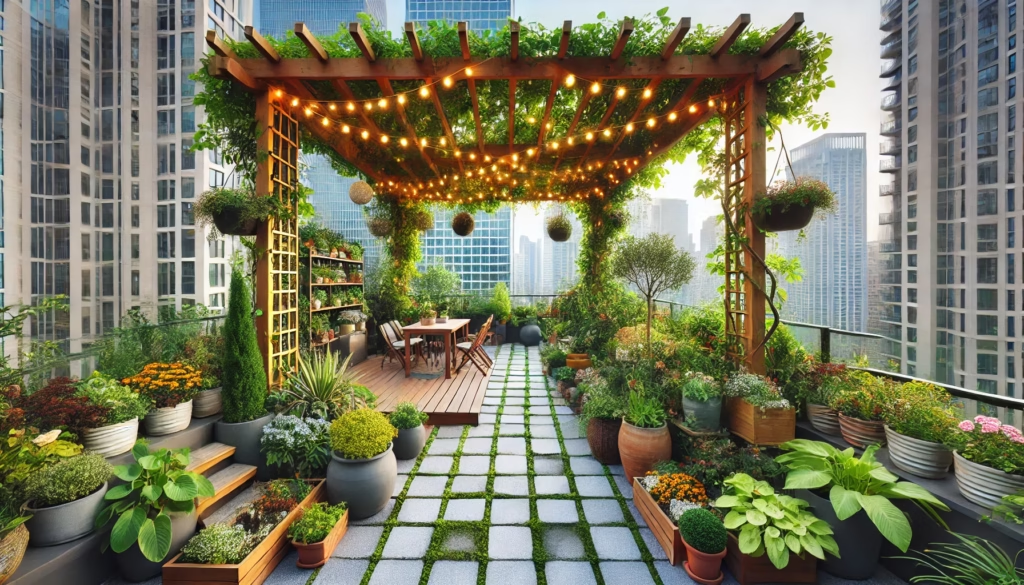Rooftop Gardening: In a time of increasing urbanization, green space has become a luxury. However, the ceiling height appears as a permanent and innovative solution for urban residents who want a touch of nature. Whether you live in a city with an upswing in the United States or anywhere in the world, this guide will lead you through the imperative of roof garden use and will help you grow your green character.

What is Rooftop Gardening?
Roof farms refer to the practice of growing plants, vegetables, and even small trees on the roof of a building. This method not only maximizes the use of available space but also provides many environmental and health benefits. This can be done in various forms, such as gardening, raised gardening, vertical gardening, or full-source roofing fields.
The benefits of a Rooftop Garden?
- Improves air quality: Plants absorb carbon dioxide and release oxygen, reduce pollution, and improve air quality in urban areas.
- Urban heat reduces the eye effect: Ceiling gardens help with low city temperatures by absorbing heat and providing insulation.
- Increases mental welfare: Horticulture has been shown to reduce stress, increase mood, and promote relaxation.
- Provides fresh yield: Increasing the vegetables and herbs ensures access to biological, pesticide-free foods.
- Energy savings: Green roofs provide natural insulation, which reduces heating and cooling.
- Property increases the value: A well-maintained roof garden can increase the aesthetic appeal and market value of a property.
Start with a roof garden!
1. Check structural integrity
Before you start, consider whether your building can support the weight of a garden. Contact a construction engineer if necessary to determine the roof’s supporting capacity.

2. Make sure you space waterproofing and drainage
A proper waterproofing system is important to prevent leaks and water damage. Install drainage layers to ensure effective drying of excess water.
3. Choose the correct containers and soil
- Container: Use light materials such as plastic, fiberglass, or bags in the fabric.
- Soil: Choose a high-quality, well-dried potted mix to promote healthy root growth.
4. Select appropriate facilities
Choose plants based on climate, availability of sunlight, and personal preferences. Some good options for roof gardens include:
- Vegetables: tomato, latus, chili, carrots
- Herbs: Tulsi, Peppermint, Rift, Thyme
- Flowers: Marigolds, petunias, sunflower
- Small trees and shrubs: dwarf fruit trees, bonsai, success
5. Plan for sunlight and shade
Most plants require at least 6 hours of sunshine daily. Consequently, use shade clothing or pergolas for the location of the solar-loving plants and delicate plants.
6. Watering
- Use a drip watering system to ensure efficient water use.
- Water in the morning or late at night to reduce evaporation.
- Collect rainwater to solve environmentally friendly water.
7. Fertilization and maintenance
- Use organic livestock manure or fertilizer to enrich the soil.
- Regularly affect and remove dead plants to maintain a healthy garden.
- Keep an eye on pests and diseases and use natural agents when needed.

Roof garden styles
Container Horticulture: Ideal for beginners, it contains growing plants in utensils or containers.
- Repealed horticulture: Build wood or metal beds for better soil control.
- Vertical horticulture: Wall plans and hanging curves to maximize the space.
- Hydroponic and aeroponic systems: Sueli gardening methods that gain popularity for urban agriculture.
Challenges and solutions
- Weight load: Instead of large beds, use a light soil mixture and plant in containers.
- Air Flow Risk: Install air barriers such as trailers or screens for the protection of delicate plants.
- Water management: Use an effective drainage system to prevent water accumulation.
- Legal and regulatory restrictions: Check local rules before starting the roof garden to ensure compliance.
Conclusion
Rooftop Garden is a rewarding exercise that benefits both individuals and communities. Whether you are in the US or elsewhere, making your roof a rich garden can increase your lifestyle and contribute to a green planet. By following this initial guide, you can start your gardening and create your urban urban.
Are you ready to start the ceiling height on the roof? Share your experiences and questions in the comments below!





